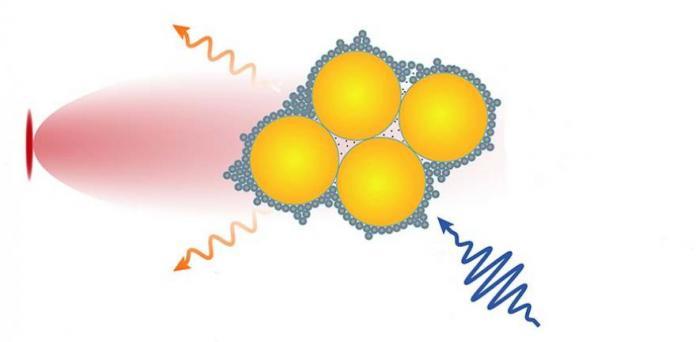The device, made by a team from the University of Cambridge, combines tiny semiconductor nanocrystals called quantum dots and gold nanoparticles using molecular glue called cucurbituril (CB). When added to water with the molecule to be studied, the components self-assemble in seconds into a stable, powerful tool that allows the real-time monitoring of chemical reactions.
The camera harvests light within the semiconductors, inducing electron transfer processes like those that occur in photosynthesis, which can be monitored using incorporated gold nanoparticle sensors and spectroscopic techniques. They were able to use the camera to observe chemical species which had been previously theorised but not directly observed.
The platform could be used to study a wide range of molecules for a variety of potential applications, such as the improvement of photocatalysis and photovoltaics for renewable energy. The results are reported in the journal Nature Nanotechnology.
Nature controls the assemblies of complex structures at the molecular scale through self-limiting processes. However, mimicking these processes in the lab is usually time-consuming, expensive and reliant on complex procedures.
“In order to develop new materials with superior properties, we often combine different chemical species together to come up with a hybrid material that has the properties we want,” said Professor Oren Scherman from Cambridge’s Yusuf Hamied Department of Chemistry, who led the research. “But making these hybrid nanostructures is difficult, and you often end up with uncontrolled growth or materials that are unstable.”
The new method that Scherman and his colleagues from Cambridge’s Cavendish Laboratory and University College London developed uses cucurbituril – a molecular glue which interacts strongly with both semiconductor quantum dots and gold nanoparticles. The researchers used small semiconductor nanocrystals to control the assembly of larger nanoparticles through a process they coined interfacial self-limiting aggregation. The process leads to permeable and stable hybrid materials that interact with light. The camera was used to observe photocatalysis and track light-induced electron transfer.
Image: Nano camera
Credit: Scherman Group
Reproduced courtesy of the University of Cambridge
